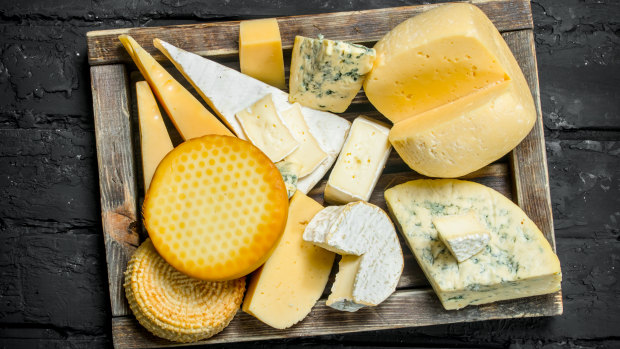Save articles for later
Add articles to your saved list and come back to them any time.
Negotiators must have been in a cheese fever dream in 2022 when they confidently forecast a free trade deal between Australia and Europe would be signed by early this year.
On Sunday night in Osaka, months after that optimistic deadline had sailed past, the final round of negotiations fell apart before they could even officially begin.
Naming rights for cheese has been an issue in Australia-EU free trade negotiations.Credit: iStock
The sticking point? Australia wanted better access to the European market for red meat, dairy and sugar than was on offer.
Free trade agreements can only work when each side is getting something in return for the concessions they make, says Jon Berry, the associate director of KPMG’s Australia Geopolitics Hub.
For Australia, the prize item on the table was better agricultural access, but the trade-offs included naming right protections for European deli goods including Australian favourites feta and parmesan.
Berry says those so-called geographic indicator protections are simply the price of doing free trade business with Europe. So the impasse we have now is that Australian businesses are being asked to surrender the names of their products – as they already have with champagne and port – while feeling like they aren’t getting much in return.
For Europe, a deal promised preferential access to Australia’s critical minerals as well as the potential removal of tariffs on luxury car imports.
But a fight between competing interests within the European Union makes coming to any agreement a difficult and lengthy process.
The EU is a behemoth bloc, made up of 27 member states with competing political and stakeholder interests to manage.
Lowy Institute’s director of research Hervé Lemahieu says any negotiation with Europe is, first and foremost, a negotiation within Europe itself – a hugely complex task for the European Commission to manage.
Just as the National Farmers Federation has been pushing Trade Minister Don Farrell to secure greater EU access for Australian produce, European agricultural lobby groups also have enormous sway.
Lemahieu says these lobbyists have the ear of the leaders of countries such as France and Ireland and also have sway in the EU parliament.
The combination of pressures puts European Commission negotiators between a rock and a hard place. Even when a deal is signed, the work hasn’t finished.
Take the Canadian-EU trade agreement. It was signed six years ago exactly and came into provisional effect in September 2017, but it is still yet to be ratified by all 27 EU member states.
Despite its glacial progress, Canada remains far ahead of Australia on an EU trade deal. Following the failure to reach an agreement over the weekend, negotiations have now been put on ice until at least 2025.
But that doesn’t mean a deal isn’t possible, or that such an agreement wouldn’t benefit both sides.
Deloitte Access Economics lead partner Pradeep Philip says there are clear benefits to closer ties with trading partners, particularly for precious critical minerals needed for a host of essential products – from mobile phones to car batteries, defence equipment and emerging technology.
For the EU, Australia could be an important friendly partner for sourcing the raw materials critical for the green energy transition, while for Australia, closer ties with the EU would provide greater access to a $24 trillion market.
Further global instability and supply chain disruption (if the war in Ukraine intensifies, or Australian relations with China frost over again) could also help spur Australia and the EU into reaching an agreement.
Right now, there isn’t enough incentive on either side to cop the political pain back home of signing up to a compromise, but negotiators working the Byzantine byways of trade know that while nothing ever happens in a hurry, you can never say never.
Cut through the noise of federal politics with news, views and expert analysis from Jacqueline Maley. Subscribers can sign up to our weekly Inside Politics newsletter here.
Most Viewed in Politics
From our partners
Source: Read Full Article








